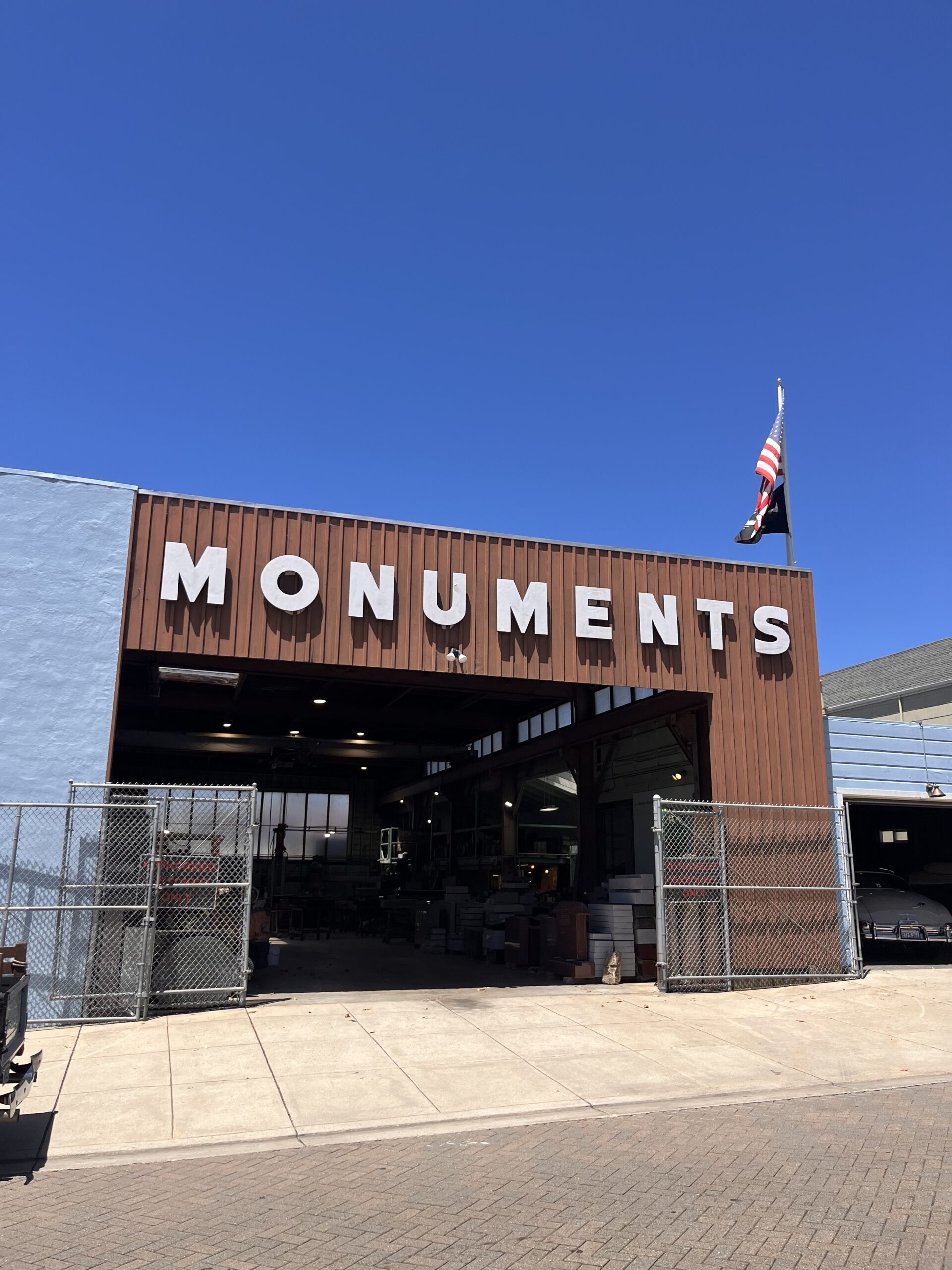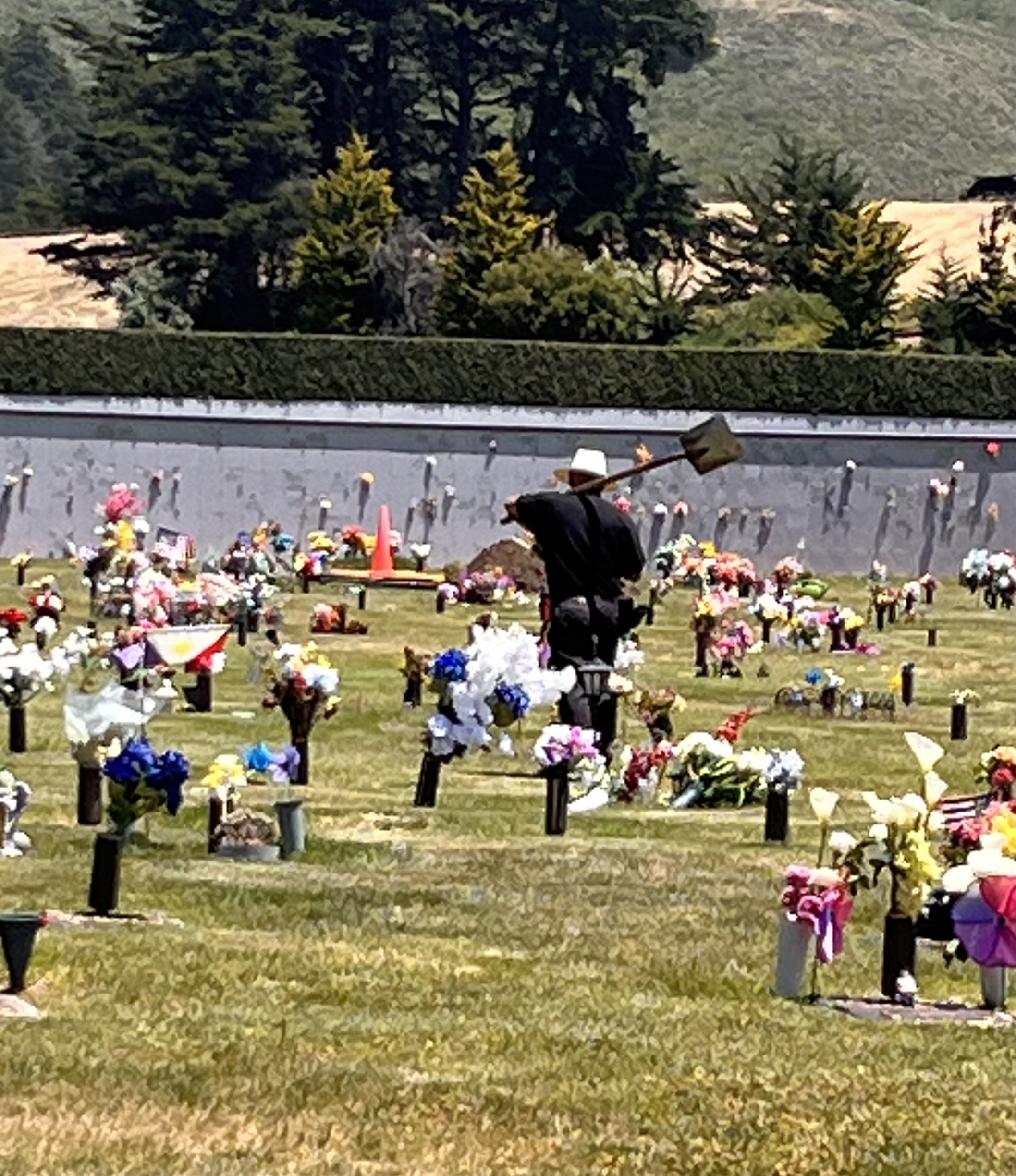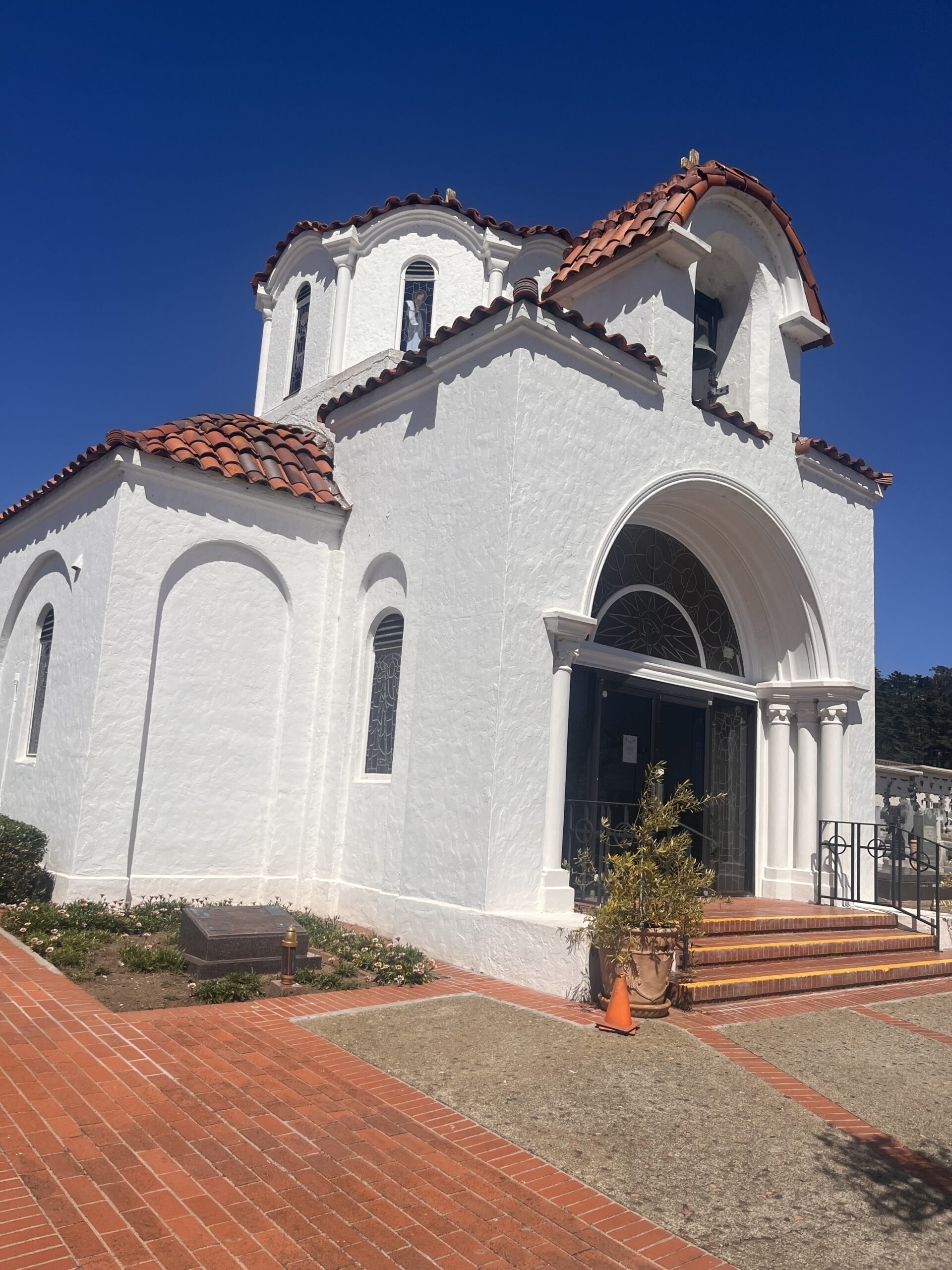As locals know, Colma is a city south of San Francisco that is mostly cemeteries. About 1500 people live there along with about two million deceased. Why? The gold rush increased San Francisco’s population quickly and more cemetery space was needed. But the city needed that land for housing and businesses and wouldn’t permit more cemeteries.
In 1887 Holy Cross Cemetery was established in Colma, which was an easy trip from the city by railroad or street car so people could visit their families’ graves. More cemeteries followed, along with businesses supplying monuments and flowers. In 1914, San Francisco “evicted” all cemetery dwellers (two cemeteries remain: Mission Dolores and the Presidio’s National Cemetery. There’s also a pet cemetery in the Presidio).
This was a messy business, as you can imagine, and took decades. Many bodies ended up in mass graves. Some ended up not being moved at all. In 2001 during construction of the Asian Art Museum, 18 skeletons were unearthed, dating from the mid to late 1800s. Tombstones became separated from bodies. Sometimes they fell off railroad cars transporting them to Colma. Orphan tombstones were used in construction of the Wave Organ, Aquatic Park and Buena Vista Park. I think I saw part of one on a trail at Fort Mason.






My first stop was the Italian Cemetery which dates from 1898 but the buildings are much newer. The few columbaria I’ve visited all feature lots of natural light, through skylights or floor to ceiling windows. I wonder how common that is. Modern ones seem even more full of light like this one with an effective second story made of glass.
The nearby community center has a little historic museum set up to look like an old train station inside (sadly, it was closed). The depot has a token section of railroad track in front of it that ends at the parking lot.








My main experience of cemeteries has been of old ones. It was a bit eye opening to visit Colma’s cemeteries, most of which are actively open for business. They have large open areas for future graves. A few had areas dotted with blank gravestones, ready to be carved into. At one, I saw a fellow with a shovel over his shoulder. Was he on his way to dig a grave???
It’s hard to capture in a photo how vast these places are. I saw some interesting tombstone designs like this one with busts protruding from it, and a walled off area guarded by fu dogs called the Yu Estate.






I sought out a few celebrity graves, like those of Emperor Norton and Wyatt Earp. Earp is buried in a Jewish cemetery next to his wife. I found that cemetery to be the most pleasing architecturally (neo-Byzantine in style) and in harmonious feeling. Most of the others feel a bit haphazard and not well cared for. It had the nicest columbarium too, with urns in different shapes in vitrines, like the ones at Oakland’s Chapel of the Chimes. Lily Hitchcock Coit has a fancy mausoleum.









I came across a Serbian cemetery with a pretty little chapel. It was next door to a sweet pet cemetery with wooden grave markers shaped like fish or bones. Down the road is a Chinese cemetery presided over by praying pandas. The Japanese cemetery is small, Colma-wise. I think it’s quite old and doesn’t seem to be very well maintained, sadly. I didn’t see all of them! There are 18 cemeteries in all.